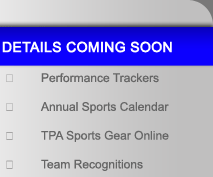There are two types of conditioning: performance related and health related.
Performance-related conditioning is linked to athletic performance (for example: a 50-yard dash time or the ability to maneuver around obstacles quickly) and is linked to speed, reaction time, and coordination.
To be effective at playing any sport requires physical conditioning: speed, power, quickness, strength, agility, flexibility and stamina. Developing a solid conditioning base is important for both the performance and the health of the athlete. The goal is to develop each aspect of physical conditioning and to use them to your advantage during sport competition. Winning the game may very well depend on who is in the best condition to finish strong. Remember: The harder you work off the court, the easier it will be on the court.
Therefore, a comprehensive program, which addresses each aspect of an athlete’s physical capabilities, is imperative for total success. The five main aspects of physical training are enhancing your speed and quickness, building your strength, improving your endurance, enhancing your flexibility, and rest & recovery. A good conditioning program should have a balanced approach to these aspects, as well as an objective and purpose for each one.
As competitive demands continue to rise at all levels in athletics, interest in physical conditioning as the focal point of a sports training program becomes more important. Any organization that hopes to succeed in the short-run and long-term, need athletes who can perform at high levels consistently and in the professional ranks, athletes who can stay healthy and have long careers.
Physical Conditioning During Seasonal Training
There are three main seasons to the sports year: off-season, preseason, and in-season. The off-season lasts roughly for a few months and is characterized as that period that you are not actively engaged in head-to-head formal/scheduled competition. You should be training during the off-season. This means getting in shape and building your fitness foundation in preparation for the coming season. You should work to increase your flexibility, strength, and endurance while improving your fundamental sport skills.
The preseason usually starts 6 to 8 weeks before your first official practice. You are training to compete and raising your level of performance in all areas. You should maintain your flexibility and continue to increase your strength and endurance; at the same time you continue to refine your sport fundamental skills.
The in-season may last anywhere from 3 to 8 months, depending on your sport. But it is characterized as that period in which you are engaged in head-to-head competition with a scheduled opponent.
Health-related conditioning is linked to fitness components that may lower risks such as high blood pressure, diabetes, heart conditions or low back pain. Health-related physical conditioning includes the following components:
*Aerobic fitness - ability of the heart and lungs to deliver blood to muscles,
*Muscular strength and endurance - enough to do normal activities easily and protect the low back,
*Flexibility - ability to move your many joints through their proper range of motion, and
*Body composition - not too much body fat, especially around the waist.



